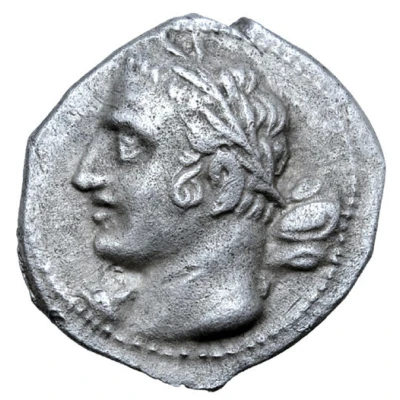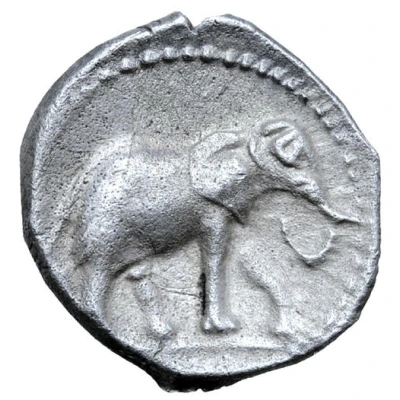


¼ Shekel - Hasdrubal the Fair 229 BC - 228 BC
| Silver | 1.71 g | 14 mm |
| Issuer | Ákra Leuká (Punic Iberia) |
|---|---|
| Governor | Hasdrubal the Fair (228 BC - 221 BC) |
| Type | Standard circulation coin |
| Years | 229 BC - 228 BC |
| Value | ¼ Shekel = ½ Drachm |
| Currency | Drachm |
| Composition | Silver |
| Weight | 1.71 g |
| Diameter | 14 mm |
| Shape | Round (irregular) |
| Technique | Hammered |
| Demonetized | Yes |
| Updated | 2024-10-09 |
| Numista | N#197636 |
|---|---|
| Rarity index | 97% |
Reverse
Elephant walking to right.
Comment
MHC 47.
This coin was minted by the Punic general Hasdrubal the Fair in 229/228 BC, immediately after the foundation of the city. In contrast to the coinage attributed to Hamilcar, this type makes no reference to the traditional naval power of Carthage, instead adopting the African elephant as the reverse type. Evidently not a war-elephant (note the absence of either a mahout or a fighting tower) it is perhaps best interpreted as a symbol of Carthage or Barcid power in general. Indeed it is known that Hasdrubal favoured diplomacy and the demanding of hostages to further expand his influence in Spain; the club-wielding Herakles-Melqart implies the threat of force rather than its open display.
Though Robinson (Essays Mattingly) interpreted the beardless head of Melqart on this coin as bearing the features of Hannibal Barca, the dating of the issue (as per Villaronga, MHC) suggests it is more likely to be Hasdrubal, if indeed an individual commander's likeness is shown.
Interesting fact
One interesting fact about the ¼ Shekel coin featuring Hasdrubal the Fair is that it was minted during a time of great cultural and political exchange between the Phoenicians and the Iberian Peninsula. The coin's design, which includes a depiction of a Phoenician ship on the obverse and a Punic inscription on the reverse, reflects the blending of these two cultures and highlights the significance of trade and diplomacy between them.